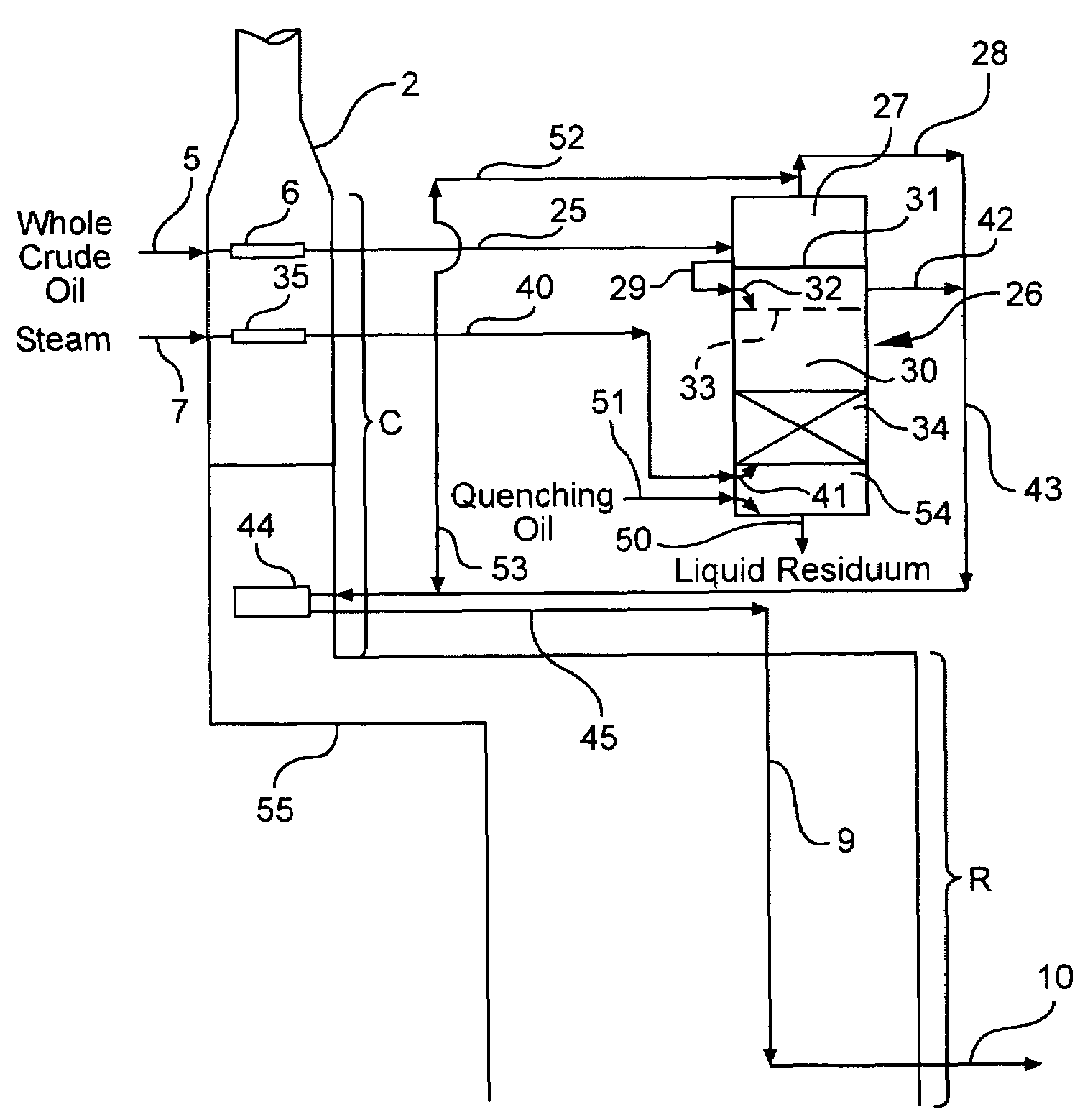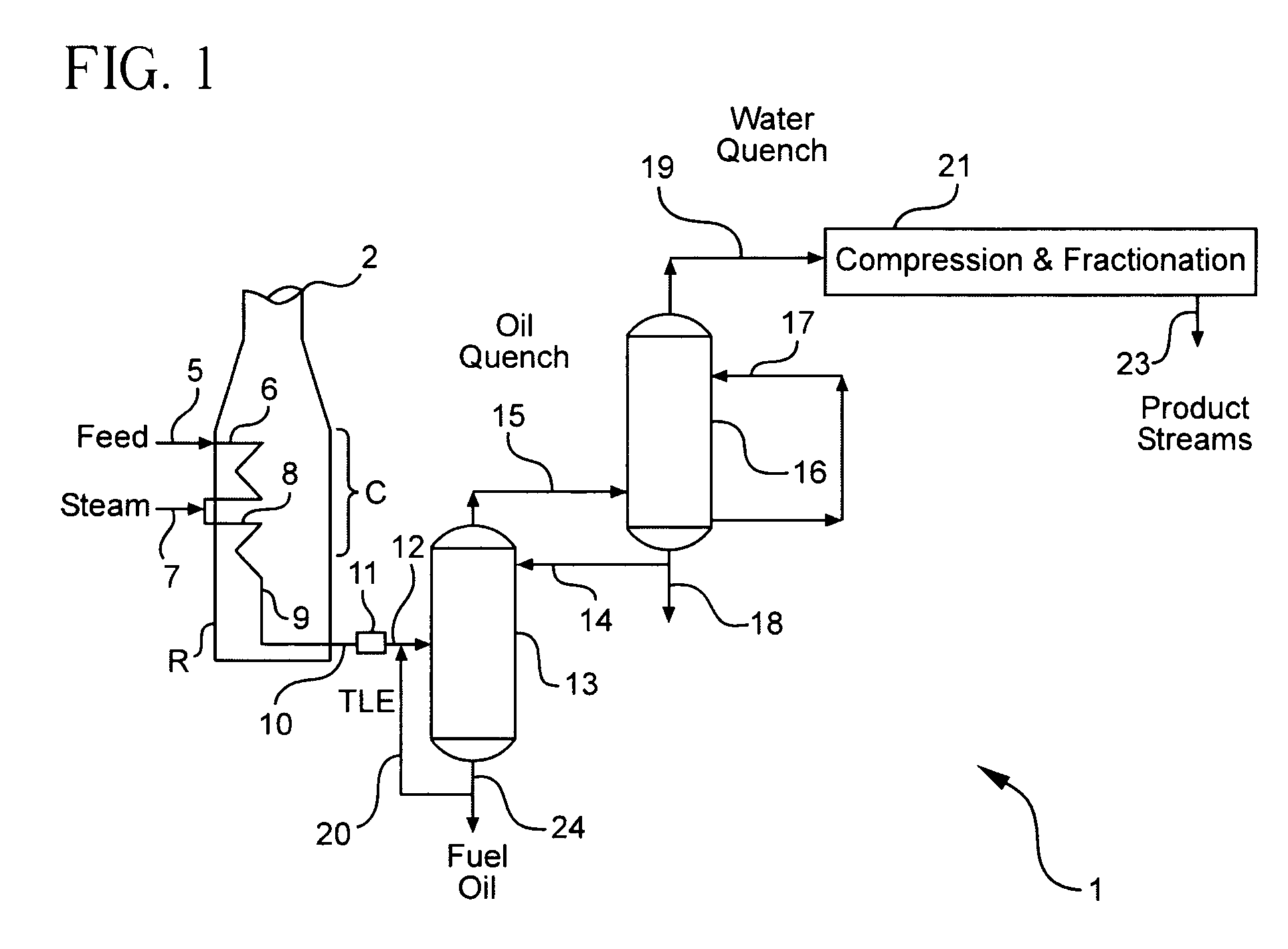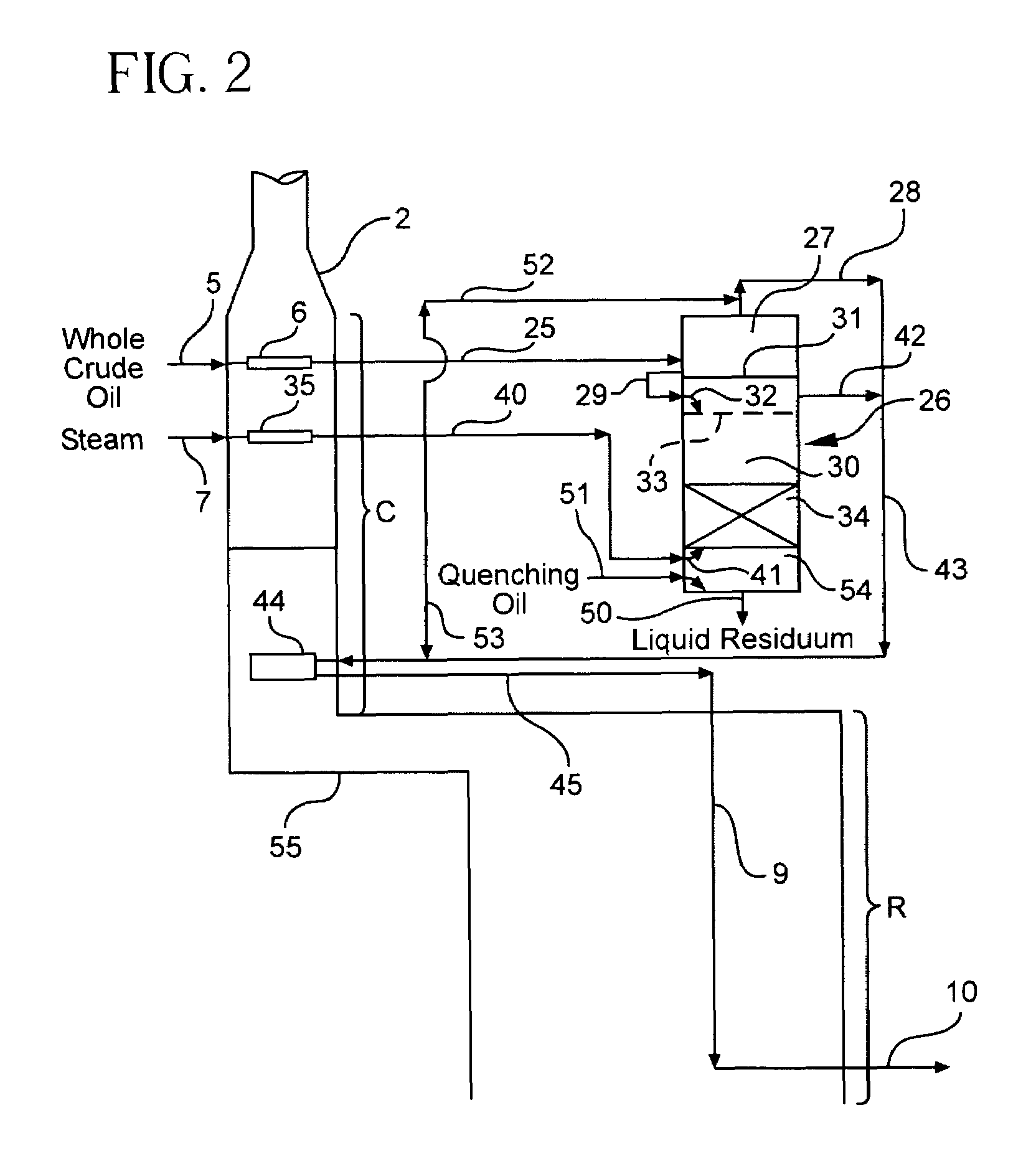Olefin production utilizing whole crude oil feedstock
a technology of olefin production and whole crude oil, which is applied in the direction of thermal non-catalytic cracking, organic chemistry, chemistry apparatus and processes, etc., can solve the problems of first subjecting the feedstock of a conventional olefin production plant to substantial, expensive processing, etc., and achieves the effect of reducing the vaporization function, mild cracking function, and eliminating the effect of oxidation
- Summary
- Abstract
- Description
- Claims
- Application Information
AI Technical Summary
Benefits of technology
Problems solved by technology
Method used
Image
Examples
example
[0081]A whole crude oil stream 5 from a storage tank characterized as Saharan Blend is fed directly into a convection section of a pyrolysis furnace 2 at ambient conditions of temperature and pressure. In this convection section this whole crude oil primary feed is preheated to about 650° F. at about 70 psig, and then passed into a vaporization unit 26 wherein hydrocarbon gases at about 650 F and 63 psig are separated from liquids in zone 27 of that unit. The separated gases are removed from zone 27 for transfer to the radiant section of the same furnace for severe cracking in a temperature range of 1,450° F. to 1,500° F. at the outlet of radiant coil 9.
[0082]The hydrocarbon liquid remaining from feed 5, after separation from accompanying hydrocarbon gases aforesaid, is transferred to lower section 30 and allowed to fall downwardly in that section toward the bottom thereof. Preheated steam 40 at about 1,100° F. is introduced near the bottom of zone 30 to give a steam to hydrocarbon ...
PUM
| Property | Measurement | Unit |
|---|---|---|
| temperature | aaaaa | aaaaa |
| pressures | aaaaa | aaaaa |
| temperature | aaaaa | aaaaa |
Abstract
Description
Claims
Application Information
 Login to View More
Login to View More - R&D
- Intellectual Property
- Life Sciences
- Materials
- Tech Scout
- Unparalleled Data Quality
- Higher Quality Content
- 60% Fewer Hallucinations
Browse by: Latest US Patents, China's latest patents, Technical Efficacy Thesaurus, Application Domain, Technology Topic, Popular Technical Reports.
© 2025 PatSnap. All rights reserved.Legal|Privacy policy|Modern Slavery Act Transparency Statement|Sitemap|About US| Contact US: help@patsnap.com



